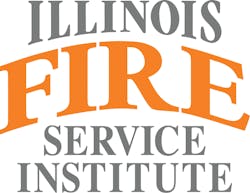IFSI Research Supplement: Concluding Messages—and What’s Next
Download the full PDF of the supplement here.
Also, view the 10 Considerations Related to Cardiovascular & Chemical Exposure Risks supplement via Firehouse’s proprietary digital platform Clarity, which includes additional content and videos, here.
This complex study addressed two of the most pressing health issues in the fire service—cardiovascular disease and cancer—by seeking to better characterize the fire environment, physiological responses and exposures during a “typical” residential fire, with the ultimate goal to permit a comparison of these responses and exposures when firefighters use different tactics or perform different assignments.
The data reported in this document is just scratching the surface. Significant additional information from this study will be shared once it has been peer-reviewed. Watch for a forthcoming toolkit (late 2017) to download the references listed on A13.
Even as we continue to analyze samples, perform statistical tests and publish our results, our findings clearly point to the need for increased understanding of the risks firefighters face. Changing fuels used in firefighter training must be evaluated in the same context as today’s fireground in order to determine risk and effectiveness of gross decontamination techniques after these events. After all, for some firefighters, training represents a significant amount of their live-fire exposure. And many believe that training fires are less hazardous than the fireground, but there is little data to support this.
As a follow-up to the information presented here, we are investigating the fuel loads that are commonly used in live-fire training to ensure that we are not needlessly exposing instructors and students to unacceptable risks. The data from this study and the related fire service implications will be released in the next year or so.
As a result of our previous projects and other important research, the U.S. fire service has become acutely aware of the limitations of some components of PPE and the need to clean PPE after fires. However, there exists no guidance on how often PPE should be laundered vs. deconned and whether multiple washes change the protective characteristics of the gear. Damage from laundering may also impact safety features that provide critical protection from fireground risks. In an ongoing study, we will advance our understanding of PPE protection and the effects of cleaning measures after realistic fire scenarios, then broadly disseminate this information.
Finally, we have identified the hood as a vulnerable component of the PPE where contaminants may penetrate the fabric and contaminate the neck. Manufacturers have introduced new hood technology to address this issue, though scientific study on the effectiveness and durability of these new hoods to live-fire exposure and repeated laundering is needed.
Stay informed
Keep up to date with information being released through:
- IFSI: fsi.illinois.edu/content/research and @IFSIresearch
- UL FSRI: ulfirefightersafety.com and @UL_FSRI
- Globe: globeturnoutgear.com/education
About the Researchers/Authors
Dr. Gavin Horn is the director of IFSI Research and a firefighter/engineer with the Savoy, IL, Fire Department. His research focuses on firefighter health and safety and first responder technology development.
Stephen Kerber is the director of the UL Firefighter Safety Research Institute. He has led research and education in ventilation, structural collapse and fire dynamics.
Dr. Denise Smith is a professor at Skidmore College and a research scientist at the Illinois Fire Service Institute (IFSI). She conducts research on the heat stress and cardiovascular strain associated with firefighting, pathoanatomic cause of firefighter fatalities, and strategies to increase performance and decrease cardiovascular events in the fire service.
Dr. Kenneth Fent is a research industrial hygienist at NIOSH. Much of his research has focused on characterizing firefighters’ exposures to chemical agents and evaluating practices intended to reduce exposures.
More from the Supplement:
About the Author
Stephen Kerber
Stephen Kerber is the director of the UL Firefighter Safety Research Institute (FSRI). He has led fire service research and education in the areas of ventilation, structural collapse and fire dynamics.
Dr. Denise Smith
Dr. Denise Smith is a professor at Skidmore College and a research scientist at the Illinois Fire Service Institute (IFSI). She conducts research on the heat stress and cardiovascular strain associated with firefighting, pathoanatomic cause of firefighter fatalities, and strategies to increase performance and decrease cardiovascular events in the fire service.
Dr. Kenneth Fent
Dr. Kenneth Fent is a research industrial hygienist at the National Institute for Occupational Safety and Health (NIOSH). Much of his research has focused on characterizing firefighters’ exposures to chemical agents, including carcinogens, and evaluating the effectiveness of practices intended to reduce exposures.
